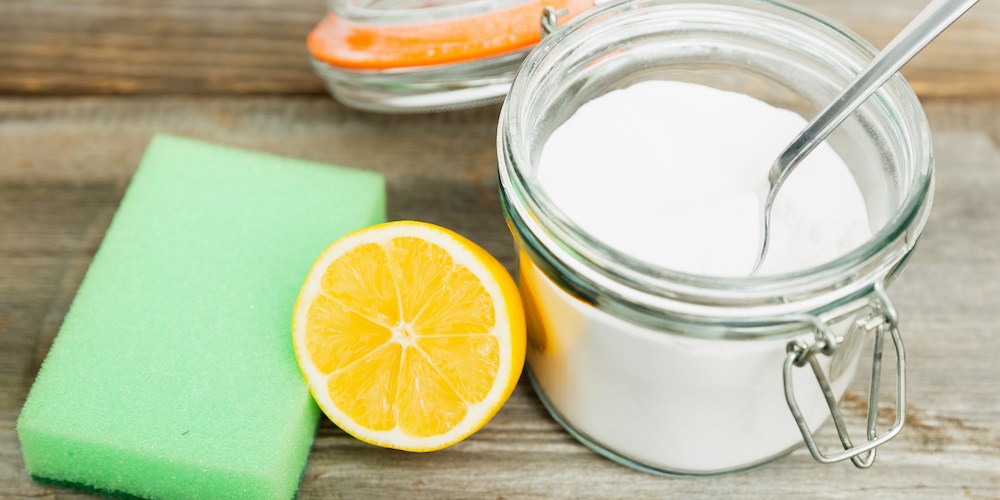
Do you have a favorite cleaning product? Maybe something whose smell just tells you everything is going to be sparkly and disinfected? A bleach or a spray, a powder or mopping liquid or a wipe? Now: Do you know what they use to make that product?
Just like OSHA (the Occupational Safety and Health Administration) works to ensure our offices and workplaces are safe, we want to ensure that our homes are safe places for anyone we hire to work in them. (Oh, and also safe for ourselves and our loved ones!) A house cleaner may only be in our home for a few hours a week, but they may spend every single day in contact with our favorite cleaning products.
That’s why Hand in Hand’s Bay Area chapter participated in the campaign to pass the “Cleaning Products Right to Know Act” in California. It will cleaning companies to disclose the majority of their ingredients, particularly any that have been associated with health harms, by 2020.
In that campaign, we met Anna Reade, a staff scientist at the Natural Resources Defense Council (NRDC), which was also part of the campaign.
To help people learn about the risks and health effects of toxic chemicals in cleaners, and to put green cleaning basics into practice at home, we ran a workshop on Non-Toxic Cleaning for the Hand in Hand community.
In preparation, we spoke with Anna about her work and what she and the NRDC have learned about toxic chemicals in our cleaning products.

Hi Anna! Tell us about who you are & what you do!
I’m a scientist working in the Health & Food program at the Natural Resources Defence Council (NRDC) – specifically I work on the toxics team. My background is in Developmental biology, and I have my PhD from UCSF. Our goal is to reduce or eliminate exposure to toxic chemicals.
What is developmental biology, exactly?
Developmental biology is the study of how organisms go from a single cell to complex multi-celled organisms—whether fish, mammals, or humans.
So is that connected to toxic chemicals?
Yes. Fetuses, infants, and children are the most vulnerable to toxic chemicals. They’re going through complex and coordinated developmental processes, so small changes to their systems can have long lasting consequences. Whether it’s a vitamin deficiency or exposure to a toxic chemical, it can result in anything from small changes in IQ, to reduced ability to fight infection, up to causing birth defects. There are single chemicals that can cause some of those things, but in our environment there are hundreds of chemicals we’re exposed to, and they add up, they interact.
How did you first learn about all the toxins we’re exposed to?
I actually iInterned at NRDC, in this same program, and got hooked on chemical policy work within a couple of weeks. It was shocking: Even at my education level and with a scientific background, knowing that things could affect our development so easily, I was pretty unaware of the lack of regulations around clean food, water, air, and consumer products. I think there’s an innate trust that the government has checked that these things will be safe for us, but I realized quickly that’s not the case! It became an important personal mission to protect myself and my family, and the public and environment.

If the government isn’t regulating this stuff, can we protect ourselves?
There are some real actionable steps we can take to protect ourselves by not bringing certain products into our homes. But there are some pollutants that are everywhere, in the air and water, so we have to take action at a higher level. For instance, PFAS, the chemicals that make Teflon-like products, don’t degrade and move really quickly in our environment. And they’re hard to get out of our food and water. After a half century of use, they’re everywhere. We can’t just get rid of them through our own personal choices. We have to let companies and the government both know we need them to take action.
Why is cleaning your house with nontoxic products important to you?
I clean my house myself. If I used products with toxins, I’d be exposed while I’m using it—it can get on my skin, I’ll breathe it in. But beyond that, they don’t completely disappear. You rinse the tub, but they’re still in there. Your kid will touch them and put their hands in their mouth. And it’s not just 1 or 2 chemicals to worry about, but many, and they can target our hormone systems, cause developmental issues, or cancer.
And there are alternatives right now that have gone through rigorous chemical assessments. In some areas of our lives, alternatives don’t exist. But with household cleaning products, this sector is growing quickly, providing us with an increasing number of options that are better for our health.
So it’s important to do it. It’s a little more elbow work, but it’s worth it.
What if I’ve always used pretty intense cleaners, but I feel fine?
Often if you get a strong sense of fumes from something, that’s not good for you. A lot of times you can’t tell you’re exposing yourself, but if you can detect fumes, that’s acute, that’s likely an immediate toxicity. Volatile solvents like those used in some paint strippers can even kill people while they’re using them. But the effects of carcinogens come out over time. We know that everything is chemicals, we’re made up of them. But the evidence is mounting that certain classes of chemicals are harmful, and we scientists have been worried about these classes for a long time.
Where should someone start making changes at home?
It’s no good freaking out about everything — eliminating all our exposure is impossible. But lowering your total exposure is possible, you can make choices. If there’s a mascara you have that you love? Fine. Maybe you change out a different makeup product first. Same for cleaning products: what would you be willing to switch?
It can cost money to transition. Don’t throw everything out right away. You can decide, When my tile cleaner runs out, I’ll have done the research on the next one I want to try. The Environmental Working Group (EWG) has ratings and reviews of products, and even an app you can use to scan barcodes in the store. But another way is just to become familiar with ingredients. If you see “phenyl-” ingredients, that’s not likely to be good for you. There are classes of chemicals you want to stay away from: phthalates, phenyls, parabens, and PFAS (look for “perfluoro- or polyfluoro-).
And start watching out for fragrance. “Fragrance” – it seems non-threatening — but it’s legally considered “confidential business information,” so it’s a term that can be used for a blend of chemicals that they don’t have to disclose. For me that’s a big red flag. Even though it doesn’t necessarily mean there are harmful chemicals inside their “fragrance,” a company I trust wouldn’t do that.
Oh, and stay away from antimicrobials. They’re not necessary! Hot water and soap do the job just fine. The wipes don’t take care of viruses, but the “disinfection byproducts” that end up going down the drain and into our water breed resistance and are associated with cancer.
Are natural fragrances better?
“Natural fragrance” isn’t necessarily better, because the word “natural” doesn’t have a legal definition. It isn’t defined. So I needed transparency. I want to buy from a company confident enough in what they’ve done to disclose it. But I’m not against the idea of a fragrance—it is just better to say “lemon” or “lavender” on the ingredient list. That’s fine!
Who else in your home benefits from your efforts?
I’ve done all the cleaning myself, but I have a toddler at home, and we hired a nanny when I went back to work, before we could have her in daycare. I wanted to extend the same protection to the nanny as to my child. I’d transitioned to non-toxics already before she was born, and I provided everything the nanny used. It was already part of my home. She brought her child over sometimes, too, and of course I would want her child to be as safe in my home as my own.
If you could snap your fingers and make one change in our cleaning supplies, what would it be?
I would love for all cleaning supplies to be “safe by design.” In other words, itI would be fantastic if all companies made chemical safety an important and integral part of their product development process.
Thank you Anna!
—
